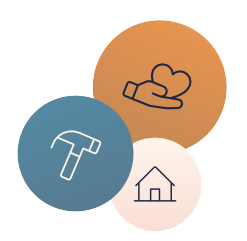洛杉磯野火災後恢復工作計畫:探索社區回饋
洛杉磯野火災後恢復工作中的計畫階段已完成。在此階段,社區成員分享了數千條評論,表達他們最需要的恢復和重建內容。您可以下載這些評論,瞭解大家的想法。
拆解複雜的需求
居民們提交了數量龐大、觀點多元的評論。我們製作了資料視覺化圖表,簡化了這些複雜資訊。這些圖表按話題和主題對評論進行了整理並展示。 這一工具將幫助您瞭解社區居民的意見並查看回饋模式。
我們設計了以下分析和視覺化圖表來幫助您:
- 全面瞭解社區居民在恢復優先事項上的觀點
- 理解不同觀點如何圍繞關鍵問題聚集
- 探索受火災影響社區所面臨問題的複雜性
- 為即將到來的社區討論做好準備
注意:本頁面提供的資訊並非最終答案或解決方案。而是説明我們識別出需要共同探討的問題與權衡事項。在接下來的商議階段,我們將尋求最佳路徑。社區成員將以審慎的方式探討這些複雜問題。
我們將邀請加州居民一同參與探討。
如何解讀這些圖表
每張圖展示一個主題下的評論。
- 每個圓點代表一條獨立評論。
- 圓點用顏色編碼,每種顏色代表評論中的一個群組。
- 我們使用 AI 來識別主題。相似評論在圖上顯示得更靠近。
數據視覺化
環境恢復和清理
野火預防的優先排序和問責機制
氣候和社區復原力
基礎設施和公用服務恢復
應急預案和社區安全
住房和重建
財務和法律援助
緊急通信
經濟恢復和小企業支援
情感和心理健康上的支持



